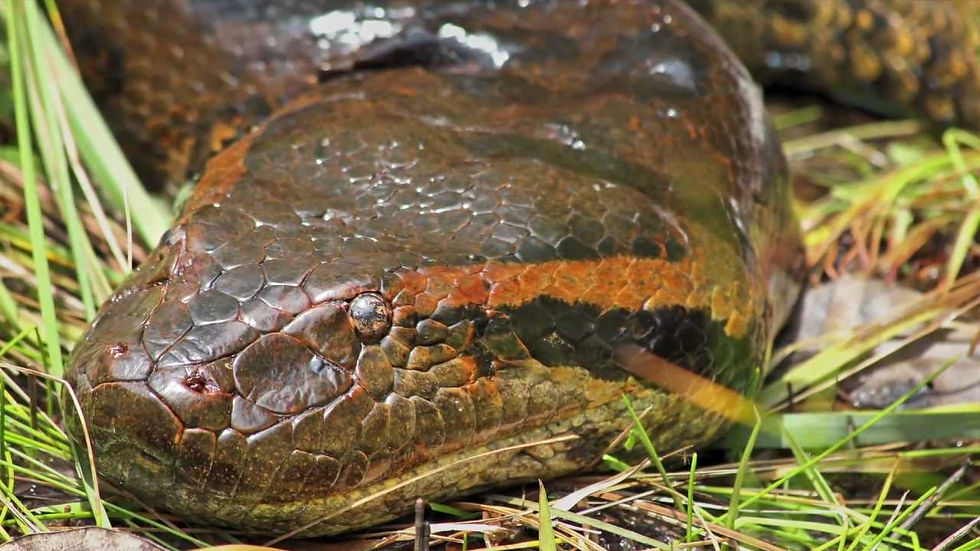
CREATURE-PEDIA
Fun Fact
An Anaconda can weigh up to 550 lbs, making them the heaviest snakes in the world.
Green Anaconda




The Green anaconda was said to be the world’s largest and heaviest snake in the world. Typically, mature specimens can reportedly range up 5 m (16.4 ft), with the females, at around a mean length of 15.1 ft, being generally much larger in adulthood than the male, which averages around 9.8 ft. Weights can reportedly range from 66 lb to 154 lb in an average-range adult. It is the largest snake native to the Americas. The color pattern consists of an olive green background overlaid with black blotches along the length of the body. The head is narrow compared to the body, usually with distinctive orange-yellow striping on either side. The eyes are set high on the head, allowing the snake to see out of the water while swimming without exposing its body. The primarily nocturnal anaconda species tend to spend most of its life in or around water. Anacondas are also sometimes known as the water boa; they spend more time in water than any of the boas. They seem rather slow and sluggish when traveling on land due to their size, although they have the potential to reach high speeds in the water. They tend to float beneath the surface of the water with their snouts above the surface. When prey passes by or stops to drink, the anaconda will strike (without eating or swallowing it) and coil around it with its body. The snake will then constrict until it has successfully suffocated the prey. Primarily aquatic, they eat a wide variety of prey, almost anything they can manage to overpower, including fish, birds, a variety of mammals, and other reptiles. Particularly large anacondas may even consume large prey such as tapirs, deer, capybaras, and caimans, but such large meals are not regularly consumed. Many local stories and legends report the anaconda as a man-eater, but little evidence supports any such activity. They employ constriction to subdue their prey. Cannibalism among green anacondas is also known, most recorded cases involving a larger female consuming a smaller male. While the exact reason for this is not understood, scientists cite several possibilities, including the possibility that a female anaconda requires additional food intake after breeding to sustain the long period of gestation. The nearby male simply provides the female a ready source of nutrition. In popular culture, the green anaconda have been portrayed in horror literature and film, often with the ability to swallow adult humans. Among the most popular films that feature it are the 1997 film, Anaconda, along with its three sequels Anacondas: The Hunt for the Blood Orchid, Anaconda 3: Offspring and Anacondas: Trail of Blood.

